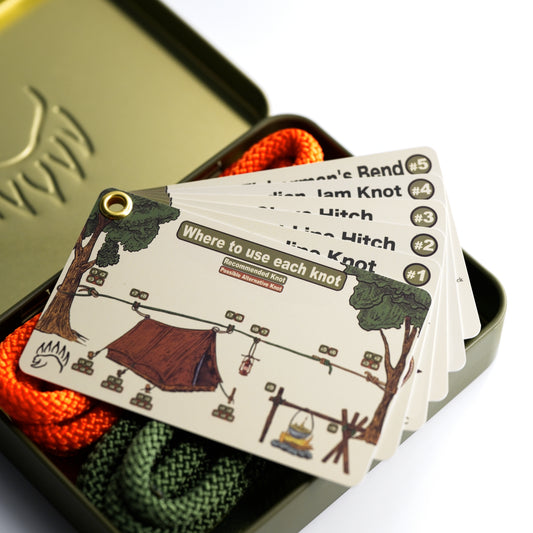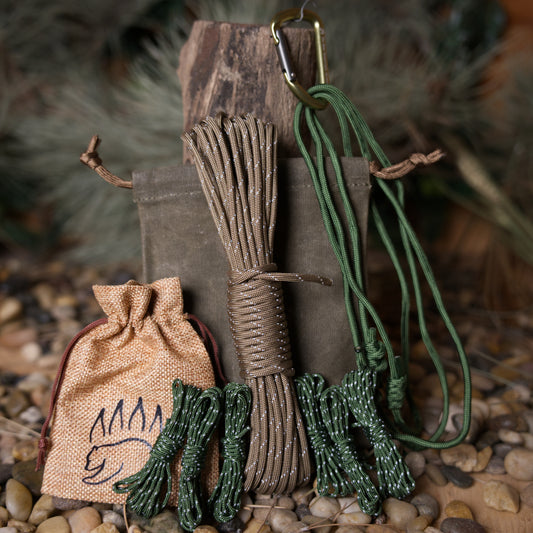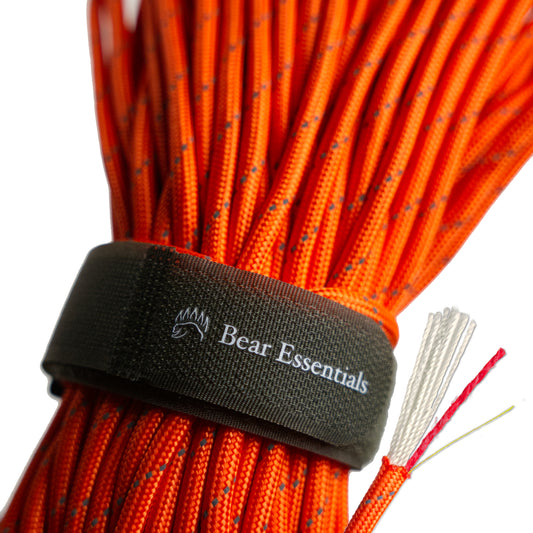How to Tie the Sliding Figure Eight Bend
Usage
The Sliding Figure Eight Bend is commonly used to join two ropes, particularly in climbing and search and rescue for its adjustable and secure nature. Unlike the Double Fisherman’s Bend, which is hard to adjust once tied, this knot allows controlled slippage under load, making it ideal for rigging. Its strength suits demanding tasks, but it requires careful tying to ensure stability. This knot is valued in scenarios needing flexible rope connections.
Why Learn the Sliding Figure Eight Bend?
Its adjustable design offers flexibility in rope joining. This knot is a reliable choice for climbers and rescuers needing secure, adaptable connections.
Common Uses
-
Climbing:
- Joins ropes for rappelling or anchor systems.
- Adjusts tension in temporary climbing setups.
-
Search and Rescue:
- Connects ropes for high-angle hauling systems.
- Secures loads in litter or stretcher operations.
-
Boating/Marine:
- Ties lines for adjustable mooring or towing.
- Joins ropes for temporary rigging tasks.
ABOK Number
(Ashley Book of Knots)
Other Names
Category
|
Notable Features
- Adjustable tension: Allows controlled slippage for precise load distribution.
- High strength: Maintains security under heavy loads in critical tasks.
- Versatile use: Suits climbing, rescue, and marine rigging applications.
- Easy to inspect: Figure-eight structure is recognizable and verifiable.
- Balanced load: Distributes stress evenly across both ropes.
Variations
No true variations are listed in the provided knot index. For added security, tie stopper knots on the tails to prevent slippage under heavy loads.
Similar Knots
Double Fisherman’s Bend vs. Sliding Figure Eight Bend
- Pros: Extremely secure and reliable for permanent joins.
- Cons: Hard to untie or adjust after heavy loading.
Sliding Sheet Bend vs. Sliding Figure Eight Bend
- Pros: Simpler to tie and adjust for non-critical tasks.
- Cons: Less secure and prone to slipping under heavy loads.
History
The Sliding Figure Eight Bend likely emerged in modern climbing and rescue contexts, building on the traditional figure-eight knot’s strength and reliability. Its adjustable nature reflects innovations for dynamic rigging needs, though it’s not explicitly listed in The Ashley Book of Knots. The knot’s use in high-stakes environments like search and rescue underscores its adaptation for precise, secure rope connections.
Security Level
The Sliding Figure Eight Bend is highly reliable for joining ropes in climbing and rescue when tied correctly, offering strong load-bearing capacity. Its adjustability allows fine-tuning under load, but it must be carefully inspected to prevent improper tying. For slippery ropes, stopper knots on the tails enhance stability.
Downsides
- Complex tying: Requires precision to ensure the figure-eight is correctly retraced.
- Inspection needed: Must be checked thoroughly to confirm security before use.
Structure
- Tie a figure-eight knot on the working end of the first rope, leaving a long tail.
- Pass the working end of the second rope through the figure-eight knot’s loop.
- Retrace the figure-eight pattern with the second rope, following the first rope’s path.
- Adjust the knot by sliding the ropes to balance tension, ensuring both tails are long.
- Pull both standing ends to tighten, checking for symmetry and security.
Pro Tip: Leave at least 12 inches of tail on each rope for safety and double-check the figure-eight pattern before loading.
FAQ
Is the Sliding Figure Eight Bend strong enough for heavy loads?
Yes, it’s robust for climbing and rescue when tied correctly, but always inspect the knot and ropes.
What ropes work best for the Sliding Figure Eight Bend?
Dynamic or static climbing ropes of similar diameter ensure strength and adjustability.
How does the Sliding Figure Eight Bend compare to the Double Fisherman’s Bend?
It’s more adjustable but requires more care to tie correctly.
Can the Sliding Figure Eight Bend be used for boating?
Yes, for adjustable rigging or mooring, but not for permanent or critical loads.
Why choose the Sliding Figure Eight Bend over a fixed bend?
Its adjustability allows precise tensioning, ideal for dynamic rigging tasks.
Important Notes on Safety
Common failure points include improper retracing of the figure-eight or insufficient tail length, which can lead to slipping. Always verify the knot is used for appropriate tasks and correctly tied.
Inspect ropes for wear or damage before tying.
Ensure the figure-eight pattern is symmetrical and secure.
Practice tying in low-risk settings to build confidence.









